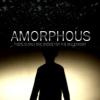It is somewhat of an open question whether single wavelengths or multiple wavelengths might be better. I think each experiment is worth a try. The MIT study from page one of this thread discussed two TBI patients who mixed 870nm and 633nm wavelengths with good effects. 850nm and 660nm are both worth a try individually and together imo.
Have you ever seen a study were LLLT effects were actually successful solely using light <800nm?
I remember hearing that the range for effective LLLT is 800nm to 2 microns, meaning 660 would be useless.
Hey, what's up Bateau? There are only a handful of transcranial human studies and none of them have used 660. The MIT study on two TBI patients included very low dose 633nm light in addition to 870nm light. This was a descriptive study on two patients with no controls so it should be viewed as very weak evidence.
As for 660 being useless, check out zawy's discussion of the LLLT research on his website. He says it just as well as I can: "The ideal wavelengths are between 600 and and 900 nm, with the best results at specific ranges: 610-625, 660-690, 750-770, and 815-860 nm." http://heelspurs.com/led.html
Here are the absorption peaks for CCO.
http://heelspurs.com/led.html#opti

Here's a response I gave to a poster on reddit a few weeks ago who claimed that ONLY 660nm works...pretty much the opposite of your question. =) Since that time another human study has come out which I'm still going through:
"Here are the six human transcranial LLLT studies. None of them use 660nm.
810nm -- http://www.ncbi.nlm....les/PMC2796659/
808nm -- http://stroke.ahajou.../38/6/1843.long
808nm -- http://stroke.ahajou.../40/4/1359.long
870nm and 633nm -- http://dspace.mit.ed...le/1721.1/58558
1064nm -- http://www.ncbi.nlm....pubmed/23200785
1064nm -- http://www.ncbi.nlm....pubmed/26017772
The first study that you linked indicates the proper absorption spectra and, contrary to your claims, near infrared light is listed: http://www.ncbi.nlm....les/PMC2996814/
"Furthermore, low-intensity laser researchers Karu and Kolyakov have reported similarities between the absorption spectrum of cytochrome C oxidase and the action spectra for various biological responses of HeLa cells irradiated with monochromatic light of 580–860 nm. These action spectra demonstrate peak positions in the red range (between 613.5 and 623.5 nm), the far-red range (between 667.5 and 683.7 nm), and two peak positions in the infrared range (750.7–772.3 nm and 812.5–846.0 nm)."
"As mentioned above, low-intensity laser/LED research shows that like the PETC, the mitochondrial electron transport chain produces ROS when illuminated with certain wavelengths (e.g., 632.8, 812, and 820 nm) of monochromatic light. The generation of such ROS, in addition to increased ATP production, may be involved in stimulating restorative mechanisms."
Edited by lostfalco, 28 September 2015 - 09:05 PM.




















































